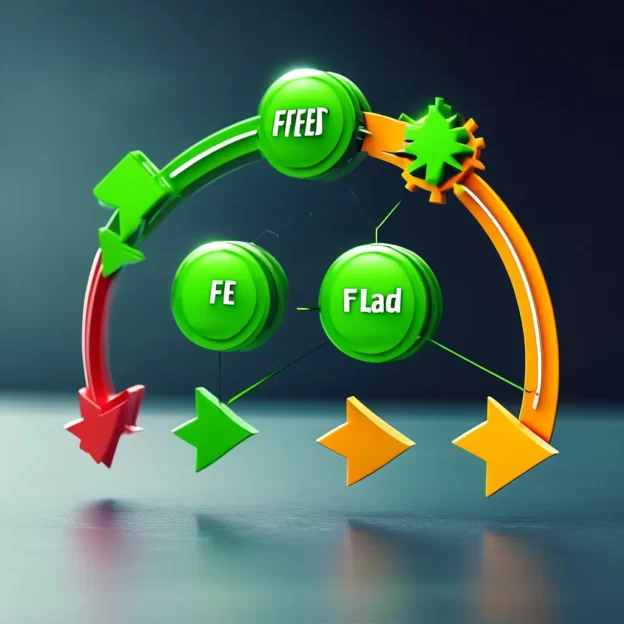Share Your Experience: Submit Feedback for Sonic Drive-In
Walking into a Sonic Drive-In is often an experience filled with nostalgia, bright red and yellow colors, the jingle of the bells, and the unmistakable scent of the famous creamy peanut butter and pickle sauces. For decades, Sonic has been a beloved fast-food destination, known for its unique menu items like the iconic Cinnamon Twists and the innovative Slushy system. As a loyal guest, you want your favorite restaurants to thrive and continuously improve. One of the most direct and impactful ways to contribute to that improvement is by sharing your experience and submitting feedback specifically through their designated channels. This article will guide you through the various ways to provide feedback to Sonic Drive-In, focusing particularly on their online survey portal at www.sonicdrivein/feedback, explaining its importance, and empowering you to be a voice for quality service and delicious food.
The Power of Your Voice: Why Feedback Matters
Your opinion, as a customer, is invaluable to any business, especially one as large and widespread as Sonic Drive-In. While you might enjoy a meal at Sonic casually, the management and staff rely on the collective feedback from guests like you to understand what’s working well and where adjustments are needed. Think about it: How do restaurant managers know if a new recipe is a hit? How do they gauge the effectiveness of staff training? How do they prioritize investments in new equipment or facility upgrades? The answers often lie in the feedback received from their guests.
Submitting feedback, particularly through structured surveys, provides management with quantitative and qualitative data. It helps identify trends, pinpoint specific issues, and measure the success of implemented changes. Positive feedback highlights strengths and reinforces good practices, while constructive criticism offers opportunities for growth. For Sonic, actively soliciting and acting upon guest feedback is crucial for maintaining its reputation as a fun, reliable, and consistently good-value dining experience.
When you take the time to share your thoughts, you become part of a larger community focused on improving the guest experience. Your feedback can lead to tangible changes – from menu item adjustments to service enhancements at a specific location or even across the entire system. It’s a direct line of communication between you, the guest, and the people responsible for running the restaurants you frequent. By participating, you’re not just venting or complimenting; you’re contributing valuable insights that shape the future of Sonic Drive-In.
How to Provide Feedback: Focusing on www.sonicdrivein/feedback
One of the primary and most accessible ways to formally share your experience with Sonic Drive-In is through their online Guest Satisfaction Survey, conveniently located at www.sonicdrivein/feedback. This digital platform offers a structured way to voice your opinions on various aspects of your visit. Here’s a closer look at how this process works and why it’s beneficial:
Accessing the Survey: The survey is typically prompted shortly after your visit if you choose to complete it via the link provided at the register or by scanning a QR code. Alternatively, you can proactively visit www.sonicdrivein/feedback at any time. The website might direct you to a specific landing page for the survey or provide instructions on how to access it.
The Survey Experience: The survey is designed to be concise yet comprehensive, usually taking only a few minutes to complete. It typically covers key areas relevant to a fast-food experience:
- Food Quality: Questions about the taste, temperature, freshness, and appearance of your food and drinks.
- Order Accuracy: Confirming whether your order was correct the first time or needed correction.
- Service Speed & Friendliness: Rating the efficiency of the staff and the warmth of their interactions.
- Value & Pricing: Opinions on the price-point relative to the quality and quantity of food received.
- Store Ambiance & Cleanliness: Comments on the overall atmosphere and tidiness of the restaurant.
- Overall Experience: A summary rating and space for general comments or suggestions.
Providing Specific Details: The survey often asks you to recall your most recent visit. You might be prompted to enter the store number or location for your feedback to ensure that management at that specific site receives your input. This targeted approach helps in addressing location-specific issues more effectively.
The Role of www.sonicdrivein/feedback: The specific URL www.sonicdrivein/feedback likely serves as the direct link to this Guest Satisfaction Survey. It’s a dedicated endpoint for collecting structured data. Completing this survey ensures your feedback is logged into their system, analyzed alongside thousands of other responses, and used to drive improvements. The survey might also ask for a unique code at the end, which could be used to track your specific feedback or potentially offer incentives in the future.
Beyond the Online Survey: Other Ways to Share Your Thoughts
While the online survey via www.sonicdrivein/feedback is a key method, Sonic Drive-In offers several other avenues for guests to provide feedback, ensuring your voice is heard through various channels:
Contacting Customer Service: If you have a specific, urgent issue or question regarding a particular location or transaction, contacting their Customer Satisfaction Team directly is an option. The reference information mentions a dedicated phone number: (866) 657-6642. This line is typically for resolving issues or inquiries that might be too complex or time-consuming for an in-store resolution. Be prepared to provide details about your visit when calling.
The Pay Compliment Program: Sonic encourages positive feedback as well. The reference mentions “Pay Compliment,” a platform (likely external to the main Sonic website) where guests can share kind words about staff members. This is a great way to publicly recognize exceptional service. While not directly linked to the www.sonicdrivein/feedback survey, positive recognition contributes to overall guest satisfaction and can motivate staff. Look for information about this program possibly linked from the main Sonic website or social media channels.
Social Media Platforms: Sonic Drive-In actively maintains social media profiles. Platforms like Facebook, Twitter (now X), and Instagram can be informal channels for guests to share experiences, post photos, compliment staff, or voice concerns. While social media feedback might not be as formally analyzed as structured surveys, it provides valuable real-time insights and allows for public engagement. Tagging the restaurant and using relevant location tags can help ensure your message reaches the appropriate team.
In-Store Feedback Opportunities: Many Sonic locations have comment cards or digital prompts at the register specifically for guest feedback. While less formal than an online survey, leaving feedback in-store ensures it reaches the local management team directly. This can be particularly effective for location-specific comments.
Email: Some Sonic locations or corporate communications might provide an email address for guest feedback. Check the restaurant’s website or inquire at the drive-thru window if this is an option.
The Impact of Your Feedback: Driving Improvement
Your feedback, whether positive or negative, holds the power to bring about real change. Management teams analyze the data collected from surveys like the one at www.sonicdrivein/feedback to identify patterns and areas needing attention. For instance:
Addressing Consistency: If multiple surveys mention issues with food temperature or order accuracy at a specific location, that information prompts an investigation and corrective action at that site.
Menu Innovation: Positive feedback on a particular item or suggestion for a new flavor can influence future menu development. Sonic’s history of innovation, from the Slushy system to potential new items, thrives on guest ideas.
Staff Training: Comments on service speed or friendliness highlight areas where staff training might be beneficial. Constructive criticism received through the survey helps managers refine training programs to ensure consistent, high-quality service across all locations.
Operational Efficiency: Feedback on wait times or drive-thru bottlenecks can lead to operational adjustments, potentially improving the overall guest journey.
By participating in the feedback process, you are contributing to a cycle of continuous improvement. Your honest and thoughtful input helps Sonic Drive-In understand its guests’ needs and preferences, ensuring the brand remains relevant, enjoyable, and consistently delivers on its promise of a fun, fast, and delicious experience.
Conclusion: Be Part of the Sonic Experience
Your experiences at Sonic Drive-In shape your memories and contribute to the brand’s legacy. By actively sharing your feedback, you play a vital role in helping Sonic understand your needs and enhance your future visits. Utilizing tools like the Guest Satisfaction Survey found at www.sonicdrivein/feedback provides a structured, impactful way to voice your opinions. Whether you’re praising the deliciousness of a new Slushy flavor, reporting an issue with service, or simply sharing a positive encounter, your input is valuable.</p



















 *Diagram illustrating the feedback loop: LLM Agent proposes action -> Opponent responds -> Utility calculated based on outcome -> Feedback provided -> Agent updates policy/model*
*Diagram illustrating the feedback loop: LLM Agent proposes action -> Opponent responds -> Utility calculated based on outcome -> Feedback provided -> Agent updates policy/model* *Chart showing potential applications of optimized LLM agents in bargaining*
*Chart showing potential applications of optimized LLM agents in bargaining*







